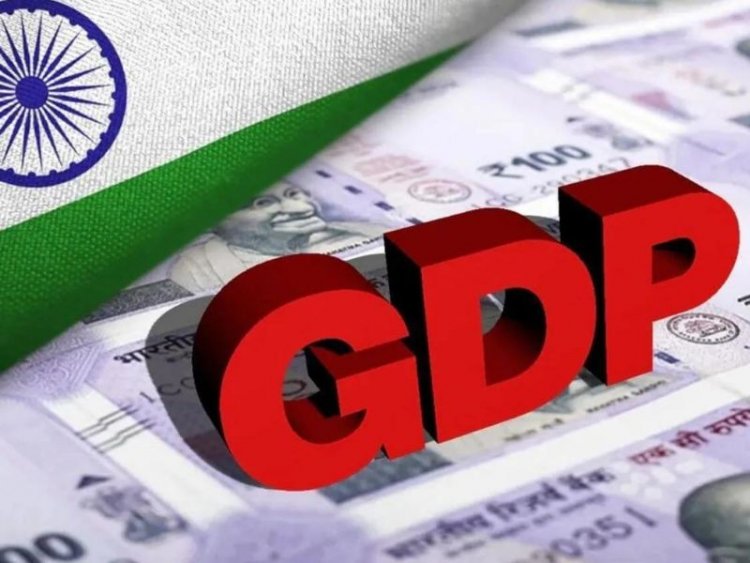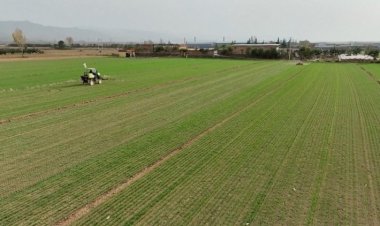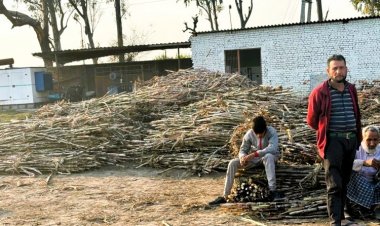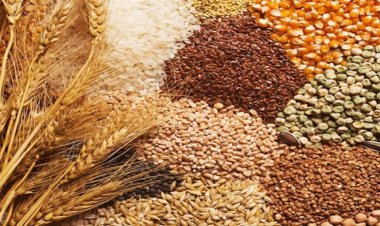Agri comes to rescue of GDP, pulled down by manufacturing sector in Q3
more significant is the fact that the farming sector has lent a vital prop to the sagging GDP in the October-December 2022 quarter. While manufacturing has pulled down the GDP growth, among other sectors agriculture is seen growing at 3.7 per cent during the quarter under review as against 2.4 per cent in the previous quarter and 2.3 per cent in the year-ago period.

The performance of the agriculture sector as reflected in the data released by the National Statistical Office (NSO) is good. But, more significant is the fact that the farming sector has lent a vital prop to the sagging GDP in the October-December 2022 quarter. While manufacturing has pulled down the GDP growth, among other sectors agriculture is seen growing at 3.7 per cent during the quarter under review as against 2.4 per cent in the previous quarter and 2.3 per cent in the year-ago period.
Thanks to the normal monsoon and farmers' hardwork along with favouralbe government policies, India is poised to reap a bumper harvest of wheat during the current crop year (July 2022-June 2023). Wheat output has been estimated at a record high of 112.18 million tonnes, 5 per cent higher than 106.84 MT last crop year.
The Government's second advance estimates are significant at a time when core inflation remains high and speculations are rife over kharif rice production and the shaping up of the wheat harvest. Wheat and rice prices soared to record highs this year. The government releases four estimates at quarterly intervals before finalising the production for a crop year. Normally, there is a revision in each round from the previous one after the first estimate is released.
The record high production of wheat, rice and coarse cereals has resulted in foodgrains production projected at a new high of 323.55 MT, up 2.5 per cent from the previous record high of 315.62 MT in 2021-22. The estimate of a record high rice production comes despite the output being lower in the kharif season.
As per the latest NSO (National Statistical Office) data released Tuesday, Asia's third-largest economy recorded year-on-year growth of 4.4 per cent in October-December, down from 11.2 per cent a year back and 6.3 per cent in the preceding quarter. Manufacturing output shrank by 1.1 per cent in October-December, the second straight contraction reflecting weakness in consumer demand and exports. One reason was weak external demand as central banks globally continued monetary tightening to tame inflation. The services sector, which is the largest component of GDP, posted a growth of 6.2 per cent during the quarter, construction recorded growth of 8.4 per cent, while trade, hotels, transport and communication grew at 9.7 per cent in Q3.
However, this is not sufficient to boost the aggregate growth rate. In Q4, the GDP must grow at least 5.1 per cent for achieving the full year growth target of seven per cent. The NSO has revised upwards the growth estimate for 2021-22 to 9.1 per cent against 8.7 per cent earlier.
Experts say it could be difficult to meet the target as interest rates are rising, suppressing demand. But, Chief Economic Adviser V Anantha Nageswaran says though manufacturing, on the face of it, has slowed down, there are enough high-frequency indicators showing fairly robust manufacturing.
The slowdown of India's economic growth came ahead of turbulence in the capital and financial markets witnessed following allegations of fraud in the Adani Group and the prediction of a hot summer. Adani group has denied all allegations. The government, however, continues to be confident about touching a GDP growth of 7 per cent for FY23 (April 2022 to March 2023) as a whole.
The Reserve Bank of India (RBI) has raised its benchmark repo rate by 250 basis points since May last year with expectations of another 25 basis points hike to 6.75 per cent in April before hitting pause until year-end. The loss in growth momentum witnessed since the July-September quarter was mainly on account of fading away of the favourable base effect, a slowdown in pent-up demand due to high inflation and interest rates, and a contraction in manufacturing sectors. Low private consumption coupled with lower government spending were also the reasons.
While there are enough signs that manufacturing is in good health, India has to be prepared to deal with El Nino and weather-related uncertainties, he said. "The trends that we have in terms of high-frequency data for 2022-23 for the fourth quarter do indicate that achieving that (4-4.1 per cent) growth rate in Q4 is well within the realm of possibility and therefore the 7 per cent real GDP growth estimate for 2022-23 is very realistic."
The Finance Ministry's Economic Survey has projected economic growth to be 6.5 per cent in the 2023-24 fiscal beginning April 2023, compared to a 7 per cent estimated growth in FY23 and a revised 9.1 per cent expansion in 2021-22. Downside risks dominate the 6.5 per cent growth forecast, Nageswaran said, adding "no big ticker shock is expected in the next fiscal".
The projection for the current fiscal is in line with the 7 per cent forecast of the Asian Development Bank (ADB) while a tad higher than the International Monetary Fund's (IMF) prediction of 6.8 per cent GDP growth in 2022-23.



 Join the RuralVoice whatsapp group
Join the RuralVoice whatsapp group









































